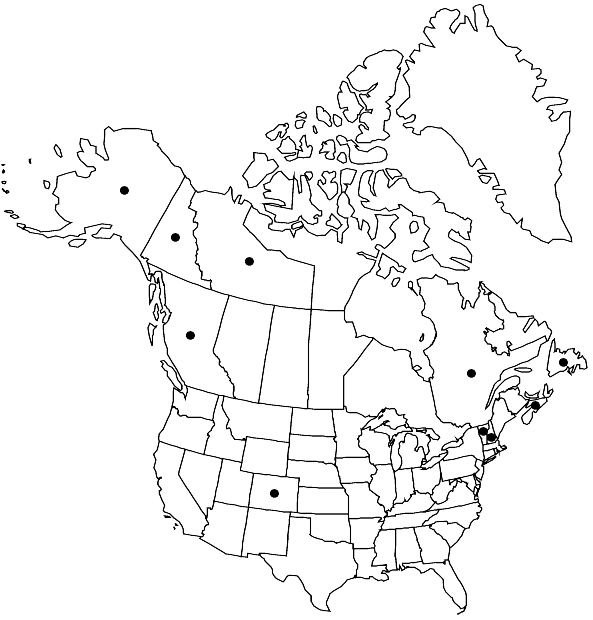Difference between revisions of "Seligeria tristichoides"
Rev. Bryol. 23: 20. 1896,.
FNA>Volume Importer |
FNA>Volume Importer |
||
| Line 29: | Line 29: | ||
-->{{#Taxon: | -->{{#Taxon: | ||
name=Seligeria tristichoides | name=Seligeria tristichoides | ||
| − | |||
|authority=Kindberg | |authority=Kindberg | ||
|rank=species | |rank=species | ||
| Line 42: | Line 41: | ||
|publication year= | |publication year= | ||
|special status= | |special status= | ||
| − | |source xml=https://jpend@bitbucket.org/aafc-mbb/fna-data-curation.git/src/ | + | |source xml=https://jpend@bitbucket.org/aafc-mbb/fna-data-curation.git/src/f50eec43f223ca0e34566be0b046453a0960e173/coarse_grained_fna_xml/V27/V27_451.xml |
|genus=Seligeria | |genus=Seligeria | ||
|species=Seligeria tristichoides | |species=Seligeria tristichoides | ||
Revision as of 21:02, 16 December 2019
Plants tiny, olive green to light green. Leaves lanceolate, to ovate-lanceolate, often stoutly subulate from broader base, narrowly obtuse to broadly acute; costa ending in apex or filling it; margins entire to crenulate; leaf cells (1–)2:1; perichaetial leaves larger and longer than vegetative leaves, somewhat differentiated. Seta 1–1.5 mm, slightly curved, stout. Capsule hemispheric to obovate-turbinate, flaring at mouth when old; peristome of 16, broad, well-developed teeth; columella exserted. Spores (15–)18–24 µm.
Habitat: Calcareous cliffs
Distribution

B.C., Nfld. and Labr. (Nfld.), N.W.T., N.S., Que., Yukon, Alaska, Colo., N.H., Vt., Europe.
Discussion
Seligeria tristichoides is relatively frequent in Alaska and western Canada, and is disjunct in Colorado, and in the east ranges from Newfoundland south to Vermont. This tiny gregarious species has a persistent columella and well-developed peristome. These features, along with the turbinate capsules and subulate vegetative leaves with costa filling the apex, are diagnostic. As the epithet attests, the leaves are often somewhat three-ranked.
Selected References
None.